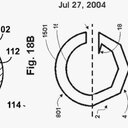In-Depth Analysis of the Structure and Properties of Two Varieties of Natural Luffa Sponge Fibers.
Słowa kluczowe
Abstrakcyjny
The advancement in science and technology has led to luffa sponge (LS) being widely used as a natural material in industrial application because of its polyporous structure and light texture. To enhance the utility of LS fibers as the reinforcement of lightweight composite materials, the current study investigates their water absorption, mechanical properties, anatomical characteristics and thermal performance. Hence, moisture regain and tensile properties of LS fiber bundles were measured in accordance with American Society for Testing and Materials (ASTM) standards while their structural characteristics were investigated via microscopic observation. Scanning electron microscopy (SEM) was used to observe the surface morphology and fractured surface of fiber bundles. The test results show that the special structure where the phloem tissues degenerate to cavities had a significant influence on the mechanical properties of LS fiber bundles. Additionally, the transverse sectional area occupied by fibers in a fiber bundle (SF), wall thickness, ratio of wall to lumen of fiber cell, and crystallinity of cellulose had substantial impact on the mechanical properties of LS fiber bundles. Furthermore, the density of fiber bundles of LS ranged within 385.46-468.70 kg/m³, significantly less than that of jute (1360.40 kg/m³) and Arenga engleri (950.20 kg/m³). However, LS fiber bundles demonstrated superior specific modulus than Arenga engleri.



